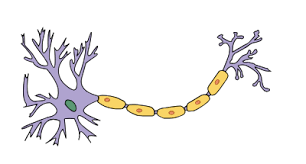Neurotransmitters
Neurotransmitters are molecules encoded with different types of signals that change different things within the body and mind. Neurotransmitters can affect arousal/alertness, mood, muscle contractions, and processing sensory information.
Neurons pass neurotransmitters to each other across the synapse, and any unused ones are absorbed back into the sending neuron, a process called reuptake.
Molecules other than neurotransmitters can be received in their place. Sometimes this is fine, but it can cause issues in the receptor area.
Agonists
An agonist is a molecule that performs the same function as a neurotransmitter if sent to its receptor. This can be a good thing if the neurotransmitter was not working properly or more was necessary, but there are risks as well. Agonists can damage receptors so that the original neurotransmitters can no longer fit. The agonist will become the only thing able to be received there.
Antagonists
An antagonist is a molecule that will fit into a receptor and block it so that no other neurotransmitter, agonist, or antagonist can enter. This can be good for unwanted neurotransmitters entering receptors, but very damaging.







